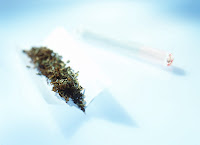One of the leading causes of death in America is drug
addiction. It is also one of the most difficult conditions to treat. When a
person starts using drugs it becomes easy for them to become addicted as their
body will start to become dependent on the drug. Fortunately, the chances of
being drug-free after years of becoming addicted are quite high especially if
the patient is taken to a very effective rehabilitation center. If you have a
loved one who is suffering from addiction to drugs such as heroin, then you must
learn everything that you need to know about detoxing from heroin.
Effects And Withdrawal Symptoms Of Heroin
Heroin is an opiate drug that has an almost immediate effect
on a person's mood depending on the amount that is taken. On higher doses it
can cause severe drowsiness within 7 to 8 seconds of intake. People get
addicted to heroin because it gives them a sense of pleasure and well-being. It
also causes them to feel drowsy and is known to reduce pain in the body. The
adverse effects include decreased heart rate and blood pressure as well as
nausea and vomiting. Taking heroin in high doses can even be deadly.
Heroin addiction is one of the most difficult conditions to
treat mainly because of the withdrawal symptoms that addicts experience the
moment they do not get their fix. Some of the most common withdrawal symptoms
include agitation, anxiety, muscle aches and insomnia. Although these symptoms
are extremely uncomfortable, they are not usually life threatening and the good
news is that they are treatable.
Heroin Addiction Recovery
Different detox centers can vary in terms of how they deal
with painful withdrawal symptoms that follow after trying to stop heroin use.
Before deciding on which rehabilitation facility to send your loved one to,
make sure to do your research. One of
the most commonly used prescription medications is called Methadone which is a
non-intoxicating drug that reduces one's desire for heroin and at the same time
prevents withdrawal symptoms. Treatment is available to help your loved one
heal from his addiction.



